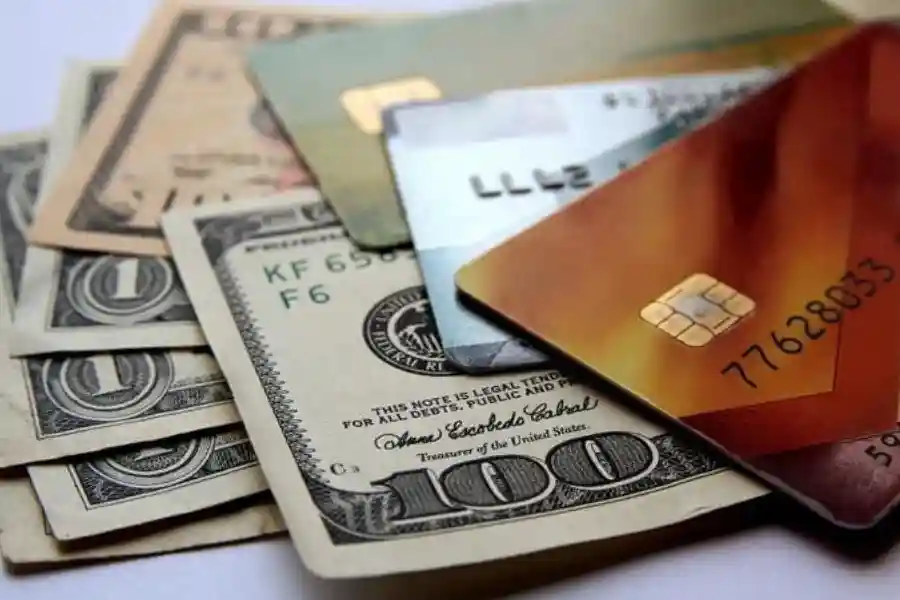The question often arises in today’s ever-evolving payment plans: Can you pay cash and credit cards? The short answer is yes, but knowing when, where, and how to implement these methods of payment can save you time and stress, as well as increase your purchasing capacity. The following article will go in-depth into the very way you are going to use cash and charge cards really, examining explanations and tips.
Key Takeaways:
- You can often use a combination of cash and credit cards for purchases in various settings.
- Understanding the benefits and limitations of each payment method helps you make informed decisions. For instance, cash ensures immediate payment and reduces the risk of overspending, while credit cards provide the advantage of deferred payments and rewards. However, cash lacks the fraud protection that credit cards offer and credit cards may come with interest fees if balances are not paid off promptly.
- Statistics show that 59% of consumers still prefer using both cash and cards for different needs (Statista, 2023). You can find the detailed report on consumer payment preferences here.
- This guide covers practical applications, benefits, and expert tips on using both payment methods.
Understanding the Basics of Payment Flexibility
Cash and credit when paying is a unique flexibility that you can offer. Such practice is common in more transactional industries, such as hospitality, where hotel guests might use cash to pay for incidentals and a credit card to settle the full bill.
Likewise, retail stores typically service customers looking to split large purchases like electronics or furniture between cash and credit. This flexibility also exists in restaurants, where diners often mix cash and cards in paying for group bills or tipping.
These examples highlight the practicality of split payments in various real-world scenarios. Retailers and service providers frequently accommodate mixed payment methods, but the specifics may vary by establishment.
Benefits of Combining Cash and Credit Cards:
- Budget Management: Using cash limits overspending, while credit cards allow for flexibility in emergencies.
- Rewards Maximization: Pay part of the transaction with a credit card to earn points or cashback.
- Avoiding Card Declines: If your credit card limit is insufficient, paying part in cash ensures a smooth transaction.
Challenges to Be Aware Of:
- Some merchants may have policies against split payments.
- Technical issues can occasionally make it difficult to process mixed transactions.
- Splitting payments may not be allowed for online purchases.
Pro Tip: Always check a retailer’s payment policy in advance to avoid surprises.
Common Scenarios Where Mixed Payments Are Accepted
Retail Stores
Many brick-and-mortar retailers accept both cash and credit cards. This is particularly useful when your available credit doesn’t cover the entire purchase amount.
Restaurants and Cafés
Dining establishments often accommodate split payments, especially for groups splitting the bill. Ensure you inform your server beforehand.
Utility Bills and Subscriptions
Some utility providers allow partial payments via cash and the remaining balance on a credit card.
| Scenario | Accepts Mixed Payments | Notes |
| Grocery Stores | Yes | Inform the cashier before starting payment. |
| Restaurants | Yes | Best for group dining or tipping needs. |
| Online Shopping | Rarely | Limited by platform capabilities. |
Legal and Industry Standards for Mixed Payments
Understanding the legal framework for payments ensures you’re not caught off guard. While there is no overarching mandate requiring merchants to accept split payments, consumer-friendly businesses often allow it.
Key Industry Insights:
- According to the Federal Reserve (2022), 62% of consumers used cash for transactions under $10, while larger payments often involved cards.
- Mobile payment platforms like PayPal and Venmo increasingly integrate with credit cards and cash top-ups, expanding mixed payment possibilities. For instance, a 2023 study by Pew Research found that 67% of adults in the U.S. use mobile payment apps regularly, highlighting a significant trend toward digital-first payment methods. This widespread adoption supports the seamless integration of mixed payment systems, further enhancing consumer convenience.
Strategic Use of Cash and Credit Cards
Making the most of cash and credit card payments requires a strategic approach:
Scenario 1: Managing Large Purchases
- Cash Advantage: Avoid accruing large interest charges by paying a significant portion upfront.
- Credit Advantage: Use rewards credit cards for a portion of the payment to earn points.
Scenario 2: Emergency Payments
- When traveling, splitting payments can help manage unforeseen expenses while conserving cash reserves.
Scenario 3: Group Payments
- Divide expenses easily between friends or colleagues by combining payment methods.
Tip: Ensure you keep receipts to track how payments were divided for better financial planning.
Digital Advancements in Payment Systems
Technology has made it easier than ever to combine payment methods. Many modern point-of-sale (POS) systems seamlessly process mixed payments.
Key Features of Advanced POS Systems:
- Multi-Tender Payments: Allow combining cash, cards, and even gift cards.
- Instant Receipts: Provide a breakdown of payment methods used.
Popular Apps and Platforms:
- Square: Offers user-friendly interfaces, seamless integration with e-commerce, and robust multi-tender payment support. Ideal for businesses prioritizing simplicity and scalability.
- Clover POS: Known for its extensive customization options, it provides advanced inventory tracking and analytics, making it a great choice for businesses with diverse needs. Both platforms are widely used by small businesses for payment flexibility, catering to varied industries such as retail and hospitality.
- Apple Pay and Google Pay: Though cash isn’t involved, these platforms allow split payments between cards and stored balances.
Expert Recommendations for Smart Payment Practices
- Carry a Mix of Payment Options
- Having both cash and credit cards ensures you’re prepared for any scenario.
- Set Clear Budgets
- Use cash to control discretionary spending while relying on credit for necessities.
- Understand Fees
- Some businesses charge extra for card payments. Using cash for these transactions can save money.
- Maintain Security
- Protect your credit card information while keeping cash securely stored to avoid theft.
Expert Quote: “Combining payment methods can offer the best of both worlds, but planning is essential.” – Financial Planner, Jane Doe
FAQs About Using Cash and Credit Cards
Can I split payments on online platforms?
While rare, some platforms like Amazon allow split payments between gift cards and credit cards.
Are there any fees for using mixed payments?
Generally, no fees are associated with splitting payments, but some businesses might impose a card surcharge.
Do all businesses accept mixed payments?
Not all businesses do. Check policies in advance, especially for small vendors.
Can I split payments at gas stations?
Yes, many gas stations accept cash for part of the payment and a card for the remainder.
How do refunds work for split payments?
Refunds are typically issued back to the original payment methods in the exact amounts paid.
Conclusion
Cash and credit card payments: The perfect combination for the modern shopper. Whether for routine purchases or significant transactions, knowing when and how to utilize mixed payment methods plays a crucial role in bolstering your financial management strategies.
What’s your split-the-bill solution if things get dicey? Let us know about your experiences and tips in the comments below. Be sure to check out our additional blogs for more on smart finance habits!

